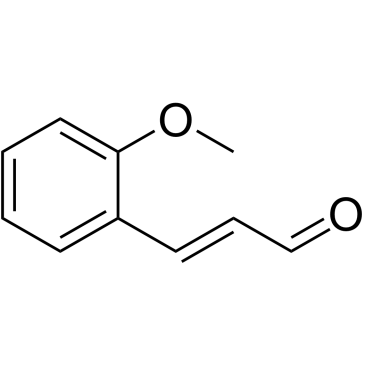Apoptosis
As one of the cellular death mechanisms, apoptosis, also known as programmed cell death, can be defined as the process of a proper death of any cell under certain or necessary conditions. Apoptosis is controlled by the interactions between several molecules and responsible for the elimination of unwanted cells from the body.
Many biochemical events and a series of morphological changes occur at the early stage and increasingly continue till the end of apoptosis process. Morphological event cascade including cytoplasmic filament aggregation, nuclear condensation, cellular fragmentation, and plasma membrane blebbing finally results in the formation of apoptotic bodies. Several biochemical changes such as protein modifications/degradations, DNA and chromatin deteriorations, and synthesis of cell surface markers form morphological process during apoptosis.
Apoptosis can be stimulated by two different pathways: (1) intrinsic pathway (or mitochondria pathway) that mainly occurs via release of cytochrome c from the mitochondria and (2) extrinsic pathway when Fas death receptor is activated by a signal coming from the outside of the cell.
Different gene families such as caspases, inhibitor of apoptosis proteins, B cell lymphoma (Bcl)-2 family, tumor necrosis factor (TNF) receptor gene superfamily, or p53 gene are involved and/or collaborate in the process of apoptosis.
Caspase family comprises conserved cysteine aspartic-specific proteases, and members of caspase family are considerably crucial in the regulation of apoptosis. There are 14 different caspases in mammals, and they are basically classified as the initiators including caspase-2, -8, -9, and -10; and the effectors including caspase-3, -6, -7, and -14; and also the cytokine activators including caspase-1, -4, -5, -11, -12, and -13. In vertebrates, caspase-dependent apoptosis occurs through two main interconnected pathways which are intrinsic and extrinsic pathways. The intrinsic or mitochondrial apoptosis pathway can be activated through various cellular stresses that lead to cytochrome c release from the mitochondria and the formation of the apoptosome, comprised of APAF1, cytochrome c, ATP, and caspase-9, resulting in the activation of caspase-9. Active caspase-9 then initiates apoptosis by cleaving and thereby activating executioner caspases. The extrinsic apoptosis pathway is activated through the binding of a ligand to a death receptor, which in turn leads, with the help of the adapter proteins (FADD/TRADD), to recruitment, dimerization, and activation of caspase-8 (or 10). Active caspase-8 (or 10) then either initiates apoptosis directly by cleaving and thereby activating executioner caspase (-3, -6, -7), or activates the intrinsic apoptotic pathway through cleavage of BID to induce efficient cell death. In a heat shock-induced death, caspase-2 induces apoptosis via cleavage of Bid.
Bcl-2 family members are divided into three subfamilies including (i) pro-survival subfamily members (Bcl-2, Bcl-xl, Bcl-W, MCL1, and BFL1/A1), (ii) BH3-only subfamily members (Bad, Bim, Noxa, and Puma9), and (iii) pro-apoptotic mediator subfamily members (Bax and Bak). Following activation of the intrinsic pathway by cellular stress, pro‑apoptotic BCL‑2 homology 3 (BH3)‑only proteins inhibit the anti‑apoptotic proteins Bcl‑2, Bcl-xl, Bcl‑W and MCL1. The subsequent activation and oligomerization of the Bak and Bax result in mitochondrial outer membrane permeabilization (MOMP). This results in the release of cytochrome c and SMAC from the mitochondria. Cytochrome c forms a complex with caspase-9 and APAF1, which leads to the activation of caspase-9. Caspase-9 then activates caspase-3 and caspase-7, resulting in cell death. Inhibition of this process by anti‑apoptotic Bcl‑2 proteins occurs via sequestration of pro‑apoptotic proteins through binding to their BH3 motifs.
One of the most important ways of triggering apoptosis is mediated through death receptors (DRs), which are classified in TNF superfamily. There exist six DRs: DR1 (also called TNFR1); DR2 (also called Fas); DR3, to which VEGI binds; DR4 and DR5, to which TRAIL binds; and DR6, no ligand has yet been identified that binds to DR6. The induction of apoptosis by TNF ligands is initiated by binding to their specific DRs, such as TNFα/TNFR1, FasL /Fas (CD95, DR2), TRAIL (Apo2L)/DR4 (TRAIL-R1) or DR5 (TRAIL-R2). When TNF-α binds to TNFR1, it recruits a protein called TNFR-associated death domain (TRADD) through its death domain (DD). TRADD then recruits a protein called Fas-associated protein with death domain (FADD), which then sequentially activates caspase-8 and caspase-3, and thus apoptosis. Alternatively, TNF-α can activate mitochondria to sequentially release ROS, cytochrome c, and Bax, leading to activation of caspase-9 and caspase-3 and thus apoptosis. Some of the miRNAs can inhibit apoptosis by targeting the death-receptor pathway including miR-21, miR-24, and miR-200c.
p53 has the ability to activate intrinsic and extrinsic pathways of apoptosis by inducing transcription of several proteins like Puma, Bid, Bax, TRAIL-R2, and CD95.
Some inhibitors of apoptosis proteins (IAPs) can inhibit apoptosis indirectly (such as cIAP1/BIRC2, cIAP2/BIRC3) or inhibit caspase directly, such as XIAP/BIRC4 (inhibits caspase-3, -7, -9), and Bruce/BIRC6 (inhibits caspase-3, -6, -7, -8, -9).
Any alterations or abnormalities occurring in apoptotic processes contribute to development of human diseases and malignancies especially cancer.
References:
1.Yağmur Kiraz, Aysun Adan, Melis Kartal Yandim, et al. Major apoptotic mechanisms and genes involved in apoptosis[J]. Tumor Biology, 2016, 37(7):8471.
2.Aggarwal B B, Gupta S C, Kim J H. Historical perspectives on tumor necrosis factor and its superfamily: 25 years later, a golden journey.[J]. Blood, 2012, 119(3):651.
3.Ashkenazi A, Fairbrother W J, Leverson J D, et al. From basic apoptosis discoveries to advanced selective BCL-2 family inhibitors[J]. Nature Reviews Drug Discovery, 2017.
4.McIlwain D R, Berger T, Mak T W. Caspase functions in cell death and disease[J]. Cold Spring Harbor perspectives in biology, 2013, 5(4): a008656.
5.Ola M S, Nawaz M, Ahsan H. Role of Bcl-2 family proteins and caspases in the regulation of apoptosis[J]. Molecular and cellular biochemistry, 2011, 351(1-2): 41-58.
What is Apoptosis? The Apoptotic Pathways and the Caspase Cascade
أهداف لـ نبسب؛ Apoptosis
- Pyroptosis(16)
- Caspase(54)
- 14.3.3 Proteins(1)
- Apoptosis Inducers(41)
- Bax(8)
- Bcl-2 Family(108)
- Bcl-xL(8)
- c-RET(8)
- IAP(26)
- KEAP1-Nrf2(68)
- MDM2(13)
- p53(108)
- PC-PLC(4)
- PKD(6)
- RasGAP (Ras- P21)(1)
- Survivin(6)
- Thymidylate Synthase(10)
- TNF-α(131)
- Other Apoptosis(884)
- Apoptosis Detection(0)
- Caspase Substrate(0)
- APC(5)
- PD-1/PD-L1 interaction(61)
- ASK1(3)
- PAR4(2)
- RIP kinase(49)
- FKBP(19)
منتجات لـ نبسب؛ Apoptosis
- القط. رقم اسم المنتج بيانات
-
GC10350
TIC10 isomer
ONC201 isomer
أيزومر TIC10 هو أيزومر TIC10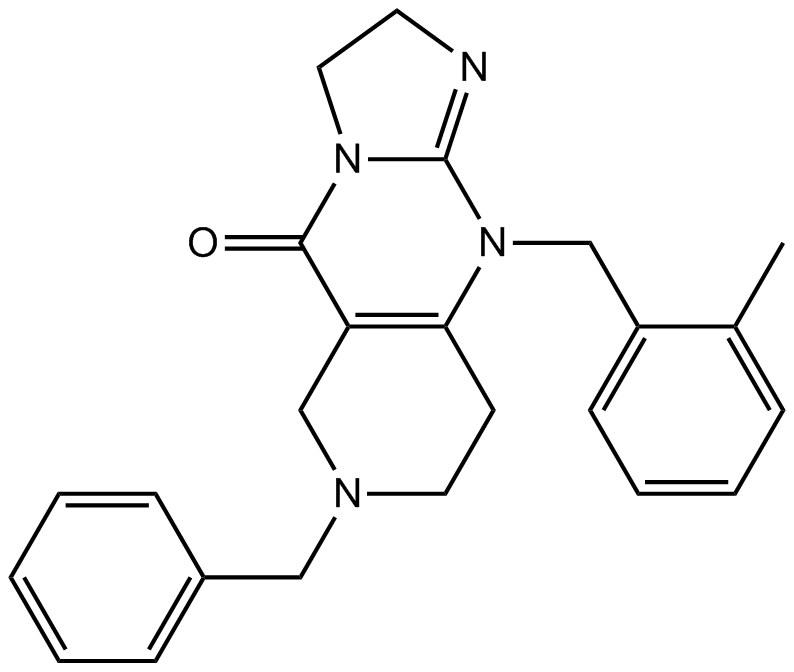
-
GC41183
α-Carotene
all-trans-α-Carotene
α ؛ - يستخدم الكاروتين ، وهو مقدمة لفيتامين أ ، كعامل مضاد للنقائل أو كعامل مساعد للأدوية المضادة للسرطان. α ؛ -الكاروتين معزول عن الخضار ذات اللون الأصفر البرتقالي والأخضر الداكن.
-
GC48292
α-MSH (human, mouse, rat, porcine, bovine, ovine) (trifluoroacetate salt)
α-Melanocyte-stimulating Hormone, Ac-SYSMEHFRWGKPV-NH2
α ؛ -MSH (α ؛ -هرمون تحفيز الخلايا الصغرى) TFA ، وهو ببتيد عصبي داخلي ، وهو ناهض لمستقبل الميلانوكورتين 4 (MC4R) مع أنشطة مضادة للالتهابات وخافض للحرارة.
-
GC45213
α-NETA
α ؛ -NetA هو مثبط قوي وغير تنافسي الكولين أسيتيل ترانسفيراز (ChA ؛ IC50 \u003d 76 ميكرومتر) وكولينستراز (ChE ؛ IC50 \u003d 40 ميكرومتر). α ؛ -NetA يثبط بشكل ضعيف أستيل كولينستراز (AChE ؛ IC50 \u003d 1 مم).

-
GC41499
α-Phellandrene
p-Mentha-1,5-diene, (±)-α-Phellandrene
α-Phellandrene is a cyclic monoterpene that has been found in various plants, including Cannabis, and has diverse biological activities.
-
GC63941
α-Solanine
α ؛ - لقد لوحظ أن السولانين ، وهو مكون نشط بيولوجيًا وواحد من الجليكوالكالويدس الستيرويدي الرئيسي في البطاطس ، يثبط النمو ويحفز موت الخلايا المبرمج في الخلايا السرطانية.
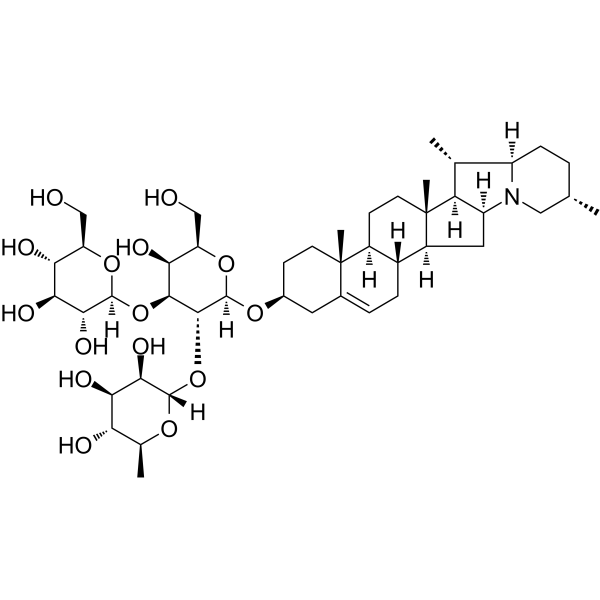
-
GC67618
α-Tocopherol phosphate disodium
alpha-Tocopherol phosphate disodium; TocP disodium; Vitamin E phosphate disodium
α ؛ - توكوفيرول فوسفات (ألفا توكوفيرول فوسفات) ثنائي الصوديوم ، أحد مضادات الأكسدة الواعدة ، يمكن أن يحمي من موت الخلايا الذي يسببه الأشعة فوق البنفسجية الطويلة الموجة ويكسح UVA1 المستحثة بـ ROS في نموذج خلية الجلد. α ؛ - يمتلك ثنائي فوسفات توكوفيرول إمكانات علاجية في تثبيط موت الخلايا المبرمج ويزيد من القدرة المهاجرة للخلايا السلفية البطانية في ظل ظروف ارتفاع الجلوكوز / نقص الأكسجة ويعزز تكوين الأوعية.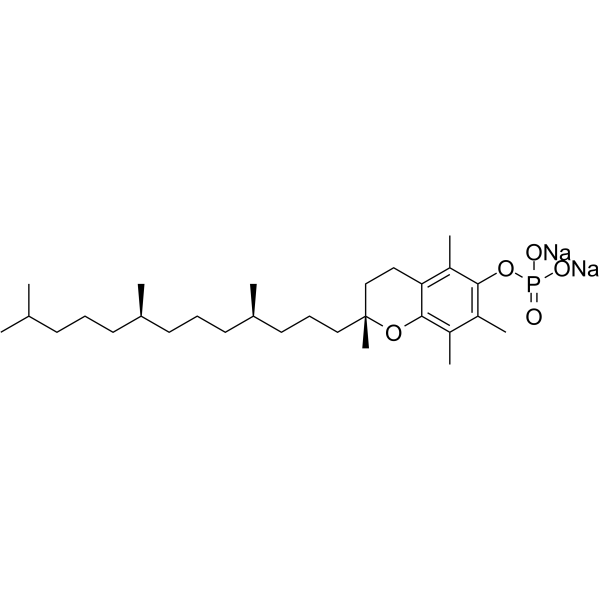
-
GC48920
β-Carboline-1-carboxylic Acid
1-Formic Acid-β-carboline
An alkaloid with diverse biological activities
-
GC41623
β-Elemonic Acid
Elemadienonic Acid, 3-Oxotirucallenoic Acid, 3-oxo Tirucallic Acid
β؛ -Elemonic Acid هو triterpene معزول من Boswellia papyrifera.
-
GC64619
β-Ionone
β؛ -Ionone فعال في تحريض موت الخلايا المبرمج في الخلايا السرطانية المعدية SGC7901. نشاط مضاد للسرطان.
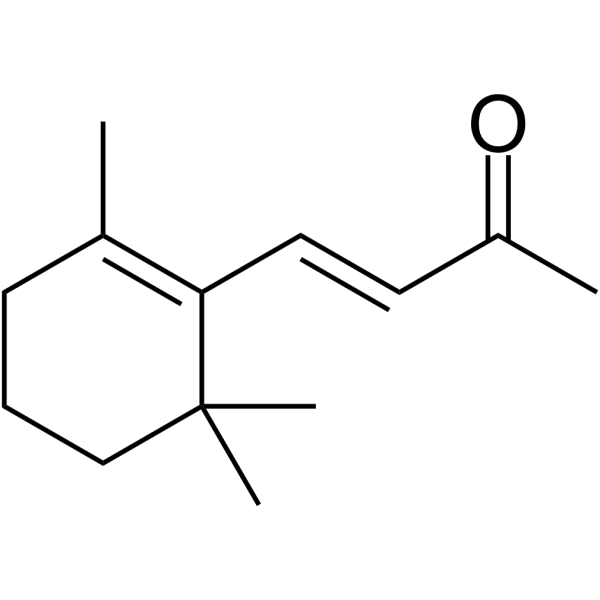
-
GC66048
δ-Secretase inhibitor 11
δ ؛ - مثبط السكريتاز 11 (المركب 11) هو فعال عن طريق الفم ، قوي ، مخترق BBB ، غير سام ، انتقائي ومحدد δ ؛ - مثبط سيكريتاز ، مع IC50 من 0.7 μ ؛ M. δ ؛ -مثبط سيكريتاز 11 يتفاعل مع كل من الموقع النشط والموقع الخيفي لـ δ ؛ -Secretase. δ ؛ - يخفف مثبط السكريتاز 11 من انقسام تاو و APP (بروتين سلائف الأميلويد). δ ؛ - يعمل مثبط السكريتاز 11 على تحسين الخلل الوظيفي المشبكي والضعف الإدراكي في نماذج الماوس المعدلة وراثيًا تاو P301S و 5 XFAD. δ ؛ -يمكن استخدام مثبطات السكريتاز 11 لأبحاث مرض الزهايمر.
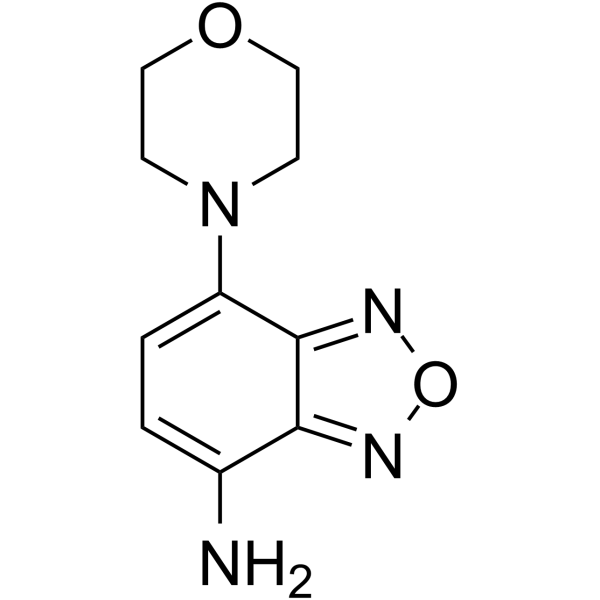
-
GC46008
(±)-Thalidomide-d4
N-Phthaloylglutamimide-d4
(± ؛) - ثاليدومايد- d4 هو الديوتيريوم المسمى ثاليدومايد.
-
GC45618
(±)-trans-GK563
GK563
A GVIA iPLA2 inhibitor
-
GC45270
(±)10(11)-EDP Ethanolamide
10,11-EDP-EA, 10,11-EDP epoxide, 10,11-epoxy Docosapentaenoic Ethanolamide
(±)10(11)-EDP ethanolamide is an ω-3 endocannabinoid epoxide and cannabinoid (CB) receptor agonist (EC50s = 0.43 and 22.5 nM for CB1 and CB2 receptors, respectively).
-
GC49268
(+)-δ-Cadinene
A sesquiterpene with antimicrobial and anticancer activities

-
GC18516
(+)-Aeroplysinin-1
NSC 170364
(+) -Aeroplysinin-1 ((+) -Aeroplysinin-1) ، وهو مستقلب ثانوي معزول من الإسفنج البحري ، يظهر تأثير مضاد حيوي قوي على البكتيريا موجبة الجرام ويمارس نشاطًا مضادًا للفيروسات ضد HIV-1 (IC50 \u003d 14.6 ميكرومتر).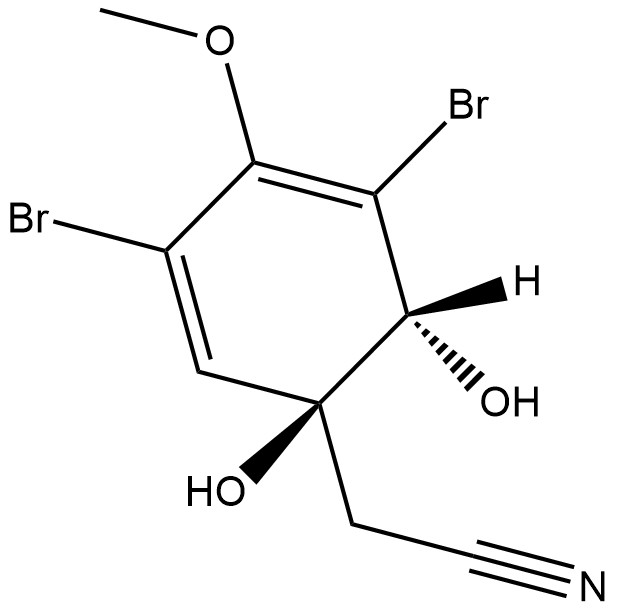
-
GC17008
(+)-Apogossypol
(+) - Apogossypol هو مضاد لعموم BCL-2(+) - يرتبط Apogossypol بـ Mcl-1 و Bcl-2 و Bcl-xL مع EC50s من 2.6 و 2.8 و 3.69 ميكرومتر على التوالي
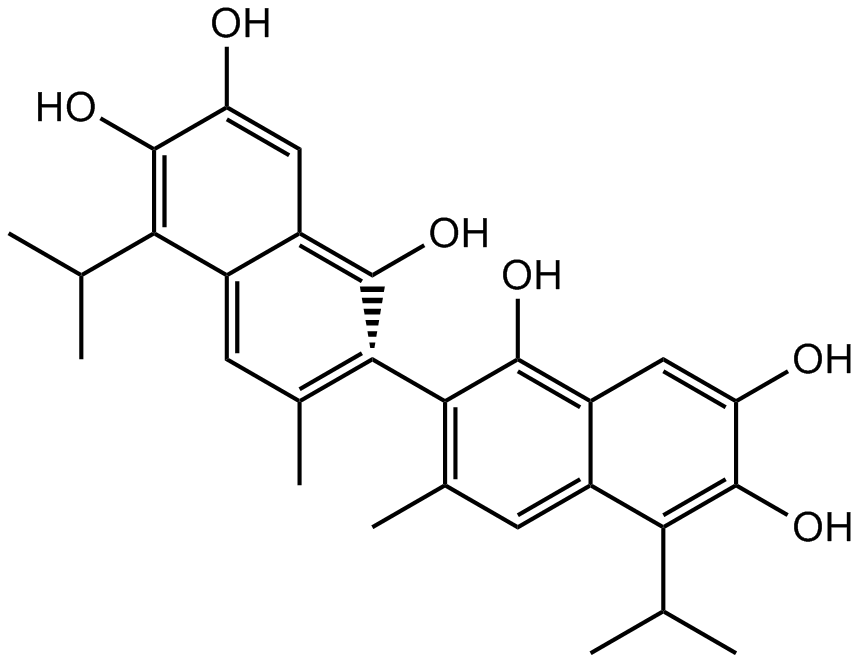
-
GC45256
(+)-ar-Turmerone
(S)(+)arTurmerone
(+) -ar-Turmerone ((+) - (+) -ar-Turmerone) هو مركب حيوي رئيسي من عشبة الكركم لونجا مع أنشطة مضادة لتكوين الأورام ومضادة للالتهابات.
-
GN10654
(+)-Corynoline
(+)-Corynoline, 13-methyl-Chelidonine, CRL, (d)-Corynoline
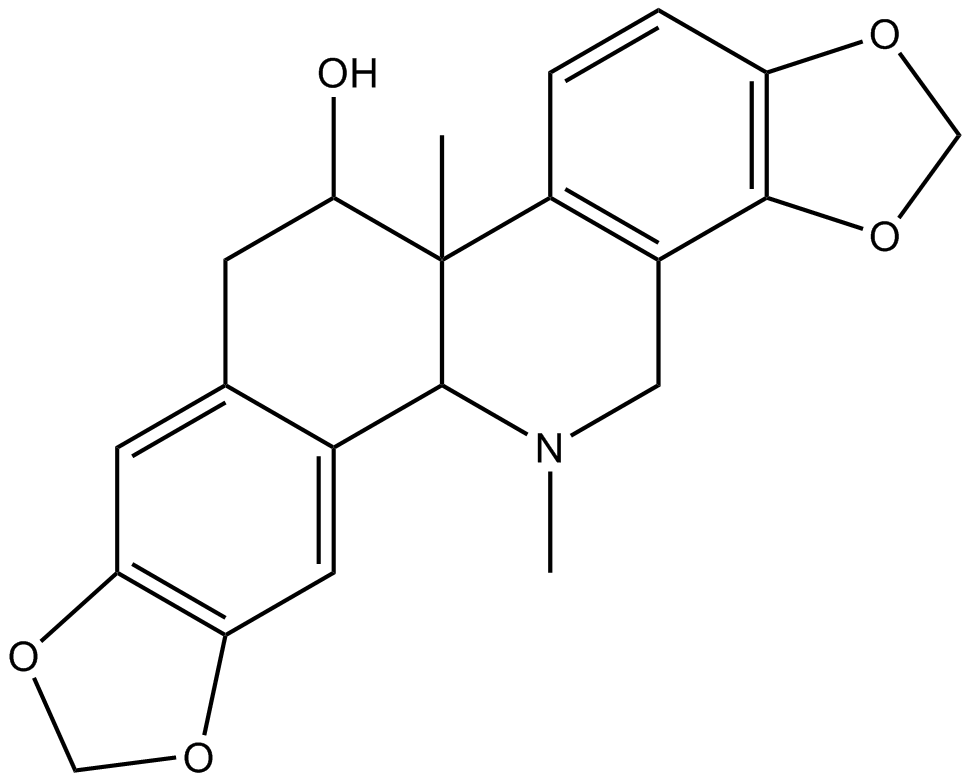
-
GC31691
(+)-DHMEQ
(1R,2R,6R)-Dehydroxymethylepoxyquinomicin; (1R,2R,6R)-DHMEQ
(+) -DHMEQ هو منشط لعامل النسخ المضاد للأكسدة Nrf2.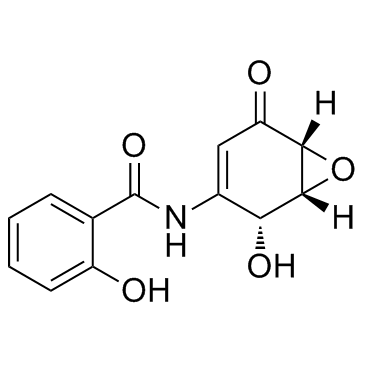
-
GC45265
(+)-Goniothalesdiol
(+)-Goniothalesdiol, isolated from the bark of the Malaysian tree G.

-
GC45274
(+)-Pinoresinol
NSC 35444
(+) -Pinoresinol هو lignol من أصل نباتي يستخدم للدفاع في كاتربيلر. (+) - يقوم البينوريسينول بتحسس الخلايا السرطانية بشكل كبير ضد الترابط الناجم عن الاستماتة الناجم عن TNF (TRAIL) الناجم عن موت الخلايا المبرمج.
-
GC18749
(+)-Rugulosin
NSC 160880, NSC 249990, Rugulosin A
(+) -Rugulosin هي مادة تلوين بلورية من Penicillium rugulosum Thom.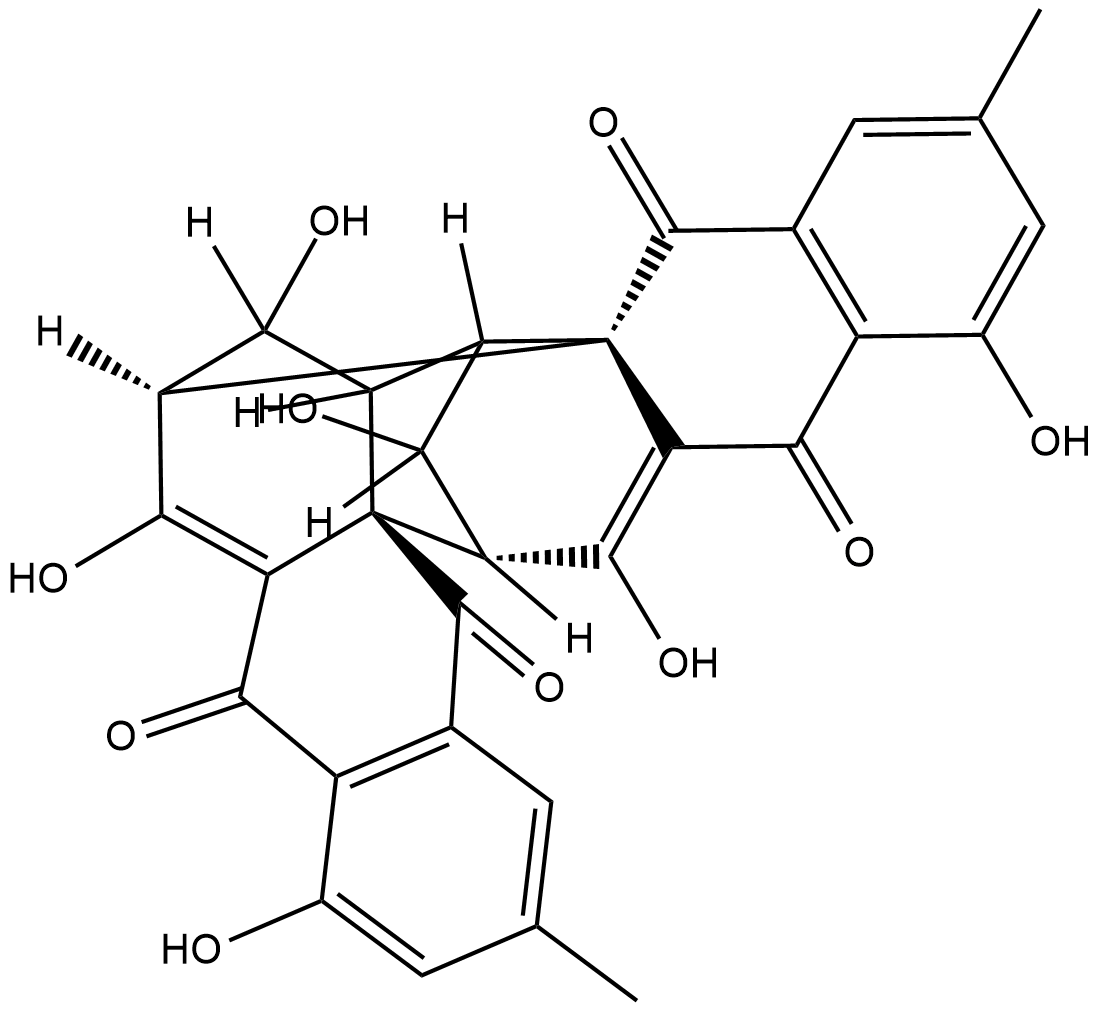
-
GC41345
(-)-α-Bisabolol
DL-α-Bisabolol
(-) - α ؛ -بيسابولول ((-) - α ؛ -بيسابولول) ، كحول سيسكيتيربين أحادي الحلق ، يمارس أنشطة مضادات الأكسدة ومضادات الالتهاب ومضادات الاستماتة.
-
GC49502
(-)-β-Sesquiphellandrene
A sesquiterpene with antiviral and anticancer activities

-
GC45244
(-)-(α)-Kainic Acid (hydrate)
محفز قوي للجهاز العصبي المركزي لإحداث نوبات صرعية.

-
GC45246
(-)-Chaetominine
(-)-Chaetominine
(-) - شيتومينين هو مستقلب قلويد. (-) - شيتومينين له سمية خلوية ضد سرطان الدم البشري K562 وسرطان القولون SW1116. (-) - يقلل الشيتومينين من مقاومة العقاقير بوساطة MRP1 عن طريق تثبيط مسار إشارات PI3K / Akt / Nrf2 في خلايا سرطان الدم البشرية K562 / Adr.
-
GC40698
(-)-Perillyl Alcohol
(L)-Perillyl Alcohol, (S)-Perillic Alcohol, (S)-(–)-Perillyl Alcohol
(-) - Perillyl Alcohol هو monoterpene موجود في الخزامى ، يمنع farnesylation of Ras ، وينظم مستقبل mannose-6-phosphate ويحفز موت الخلايا المبرمج. نشاط مضاد للسرطان.
-
GC40076
(-)-Voacangarine
NSC 306219, (-)-Voacristine
(-)-Voacangarine is an indole alkaloid originally isolated from V.
-
GC62193
(1S,2S)-Bortezomib
(1S ، 2S) -بورتيزوميب هو متشابهة من بورتيزوميبBortezomib هو مثبط للبروتوزوم قابل للنفاذ للخلايا وقابل للعكس وانتقائي ، ويثبط بقوة 20S proteasome (Ki 0.6 نانومتر) عن طريق استهداف بقايا ثريونينيعطل Bortezomib دورة الخلية ، ويحفز موت الخلايا المبرمج ، ويمنع NF-Bبورتيزوميب هو عامل مضاد للسرطان وأول مثبط علاجي للبروتوزوم يستخدم في البشر
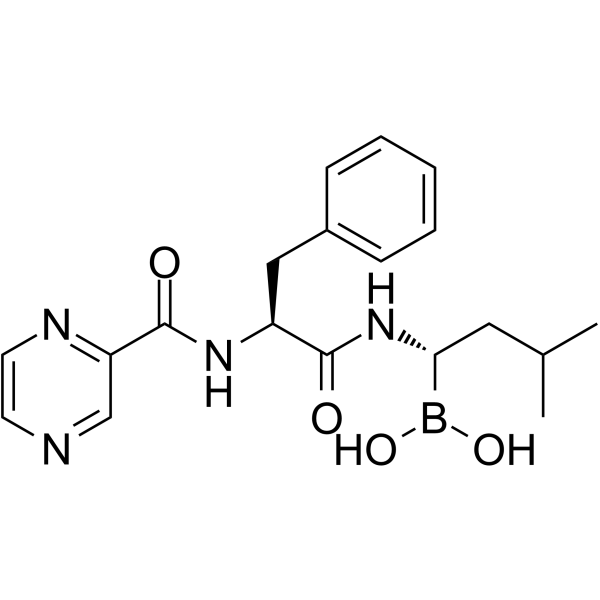
-
GC34965
(20S)-Protopanaxatriol
20(S)-APPT, 20(S)-PPT
مستقلب نشط لجينسينوسايد.
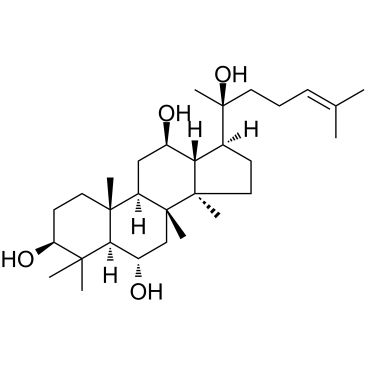
-
GC60397
(5Z,2E)-CU-3
(5Z ، 2E) -CU-3 هو مثبط قوي وانتقائي ضد α-isozyme لـ DGK بقيمة IC50 تبلغ 0.6 ميكرومتر ، ويثبط بشكل تنافسي تقارب DGKα لـ ATP بقيمة كيلومتر تبلغ 0.48 ملي مولار(5Z ، 2E) -CU-3 تستهدف المنطقة المحفزة ، ولكن ليس المنطقة التنظيمية لـ DGKα(5Z ، 2E) -CU-3 له تأثيرات مضادة للأورام ومسببة للمناعة ، ويعزز موت الخلايا المبرمج للخلايا السرطانية وتنشيط الخلايا التائية
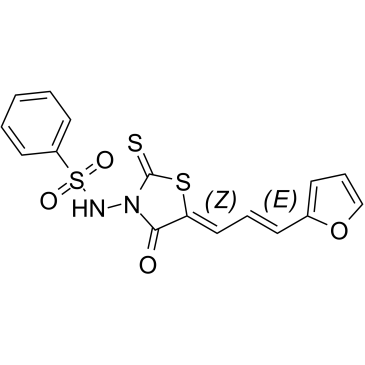
-
GC60398
(6R)-FR054
(6R) -FR054 هو أيزومر أقل نشاطًا لـ FR054
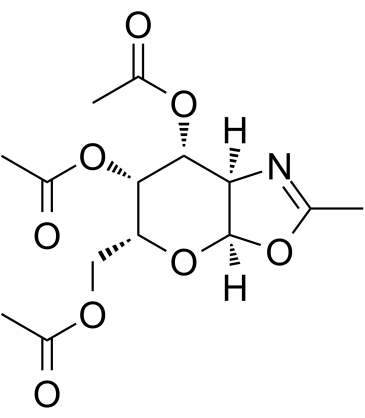
-
GC50482
(D)-PPA 1
PD-1/PD-L1 interaction inhibitor

-
GC69009
(D)-PPA 1 TFA
(D)-PPA 1 TFA هو مثبط للـ D-peptide المضاد للتحلل المائي. (D)-PPA 1 TFA هو مثبط فعال لـ PD-1/PD-L1. يتراوح التفاعل بين (D)-PPA 1 TFA وPD-1 من القوة الجذابية بمقدار 0.51 μM، وهو فعال في الجسم وخارجه.

-
GA20156
(D-Ser(tBu)⁶,Azagly¹⁰)-LHRH (free base)

-
GC41700
(E)-2-(2-Chlorostyryl)-3,5,6-trimethylpyrazine
CSTMP
(E)-2-(2-Chlorostyryl)-3,5,6-trimethylpyrazine (CSTMP) is a stilbene derivative with antioxidant and anticancer activities.
-
GC41268
(E)-2-Hexadecenal
trans-2-Hexadecenal
Sphingosine-1-phosphate (S1P), a bioactive lipid involved in many signaling processes, is irreversibly degraded by the membrane-bound S1P lyase.
-
GC41701
(E)-2-Hexadecenal Alkyne
(E)-2-Hexadecenal alkyne is an alkyne version of the sphingolipid degradation product (E)-2-hexadecenal that can be used as a click chemistry probe.

-
GC34980
(E)-Ferulic acid
(هـ) - حمض الفيروليك هو أيزومر لحمض الفيروليك وهو مركب عطري وفير في جدران الخلايا النباتية(E) - يتسبب حمض الفيروليك في فسفرة البيتا-كاتينين ، مما يؤدي إلى تحلل البروتوزوم لـ β-catenin ويزيد من التعبير عن العامل المؤيد للاستماتة Bax ويقلل من التعبير عن العامل المؤيد للبقاء على قيد الحياة(E) - يظهر حمض الفيروليك قدرة قوية على إزالة أنواع الأكسجين التفاعلية (ROS) ويمنع بيروكسيد الدهون(E) - يمارس حمض الفيروليك كلا من التأثيرات المضادة للتكاثر والهجرة في خط خلايا سرطان الرئة البشرية H1299
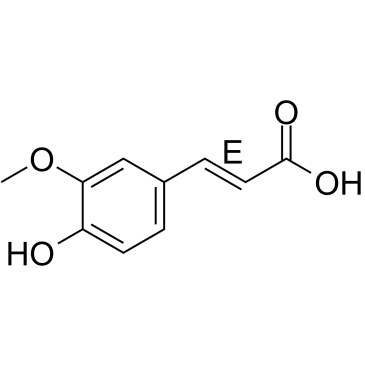
-
GC34981
(E)-Flavokawain A
Flavokavain A, 4-methoxy Flavokawain B
(E) -Flavokawain A ، شالكون مستخرج من الكافا ، له تأثير مضاد للسرطان(E) -Flavokawain A يستحث موت الخلايا المبرمج في خلايا سرطان المثانة من خلال إشراك مسار موت الخلايا المبرمج المعتمد على بروتين bax والمعتمد على الميتوكوندريا ويثبط نمو الورم في الفئران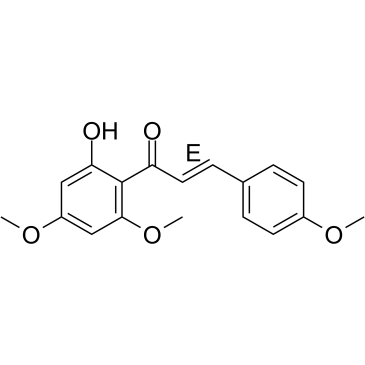
-
GC61437
(E)-Methyl 4-coumarate
trans-4-Coumaric Acid methyl ester, trans-p-Coumaric Acid methyl ester, trans-para-Coumaric Acid methyl ester
(E) -Methyl 4-coumarate (Methyl 4-hydroxycinnamate) ، الموجود في العديد من النباتات ، مثل البصل الأخضر (Allium cepa) أو noni (Morinda citrifolia L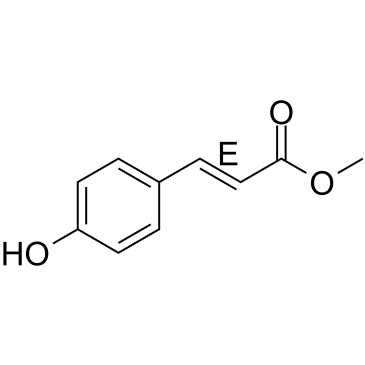
-
GC34125
(E)-[6]-Dehydroparadol
(E) - [6] -Dehydroparadol ، مستقلب مؤكسد لـ [6] -Shogaol ، هو منشط فعال لـ Nrf2(E) - [6] -Dehydroparadol يمكن أن يمنع النمو ويحث على موت الخلايا المبرمج للخلايا السرطانية البشرية
![(E)-[6]-Dehydroparadol Chemical Structure (E)-[6]-Dehydroparadol Chemical Structure](/media/struct/GC3/GC34125.png)
-
GC49189
(E/Z)-4-hydroxy Tamoxifen-d5
Afimoxifene-d5, 4-OHT-d5
An internal standard for the quantification of (E/Z)-4-hydroxy tamoxifen
-
GN10783
(R) Ginsenoside Rh2
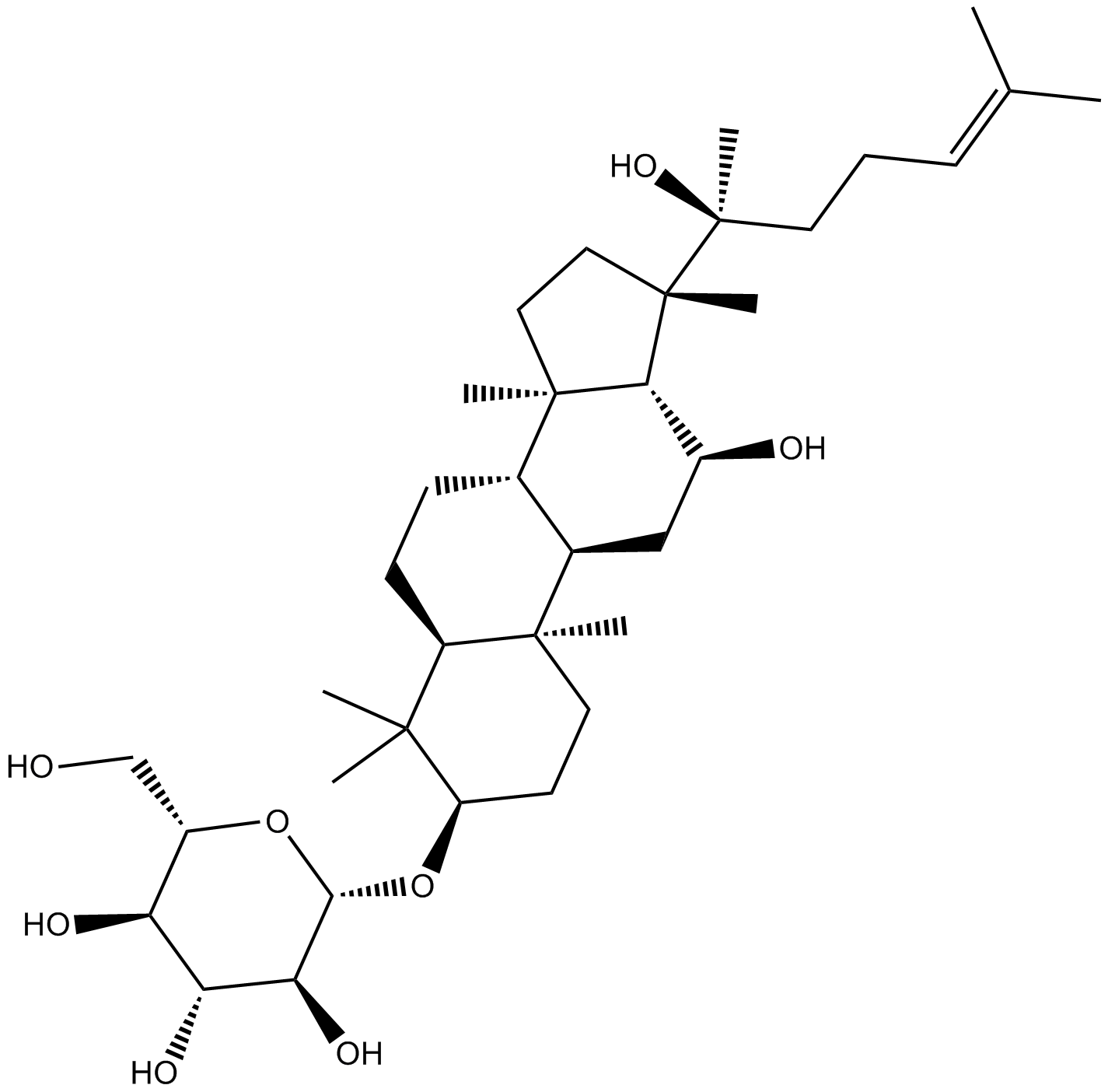
-
GC15104
(R)-(+)-Etomoxir sodium salt
(R)(+)Etomoxir
إيتوموكسير ((R) - (+) -Etomoxir) ملح الصوديوم مثبط لا رجعة فيه لمادة كارنيتين بالميتويل ترانسفيراز 1 أ (CPT-1a) ، يمنع أكسدة الأحماض الدهنية (الفاو) من خلال CPT-1a ويمنع بالميتات β ؛ - الأكسدة في الإنسان ، الفئران وخنزير غينيا.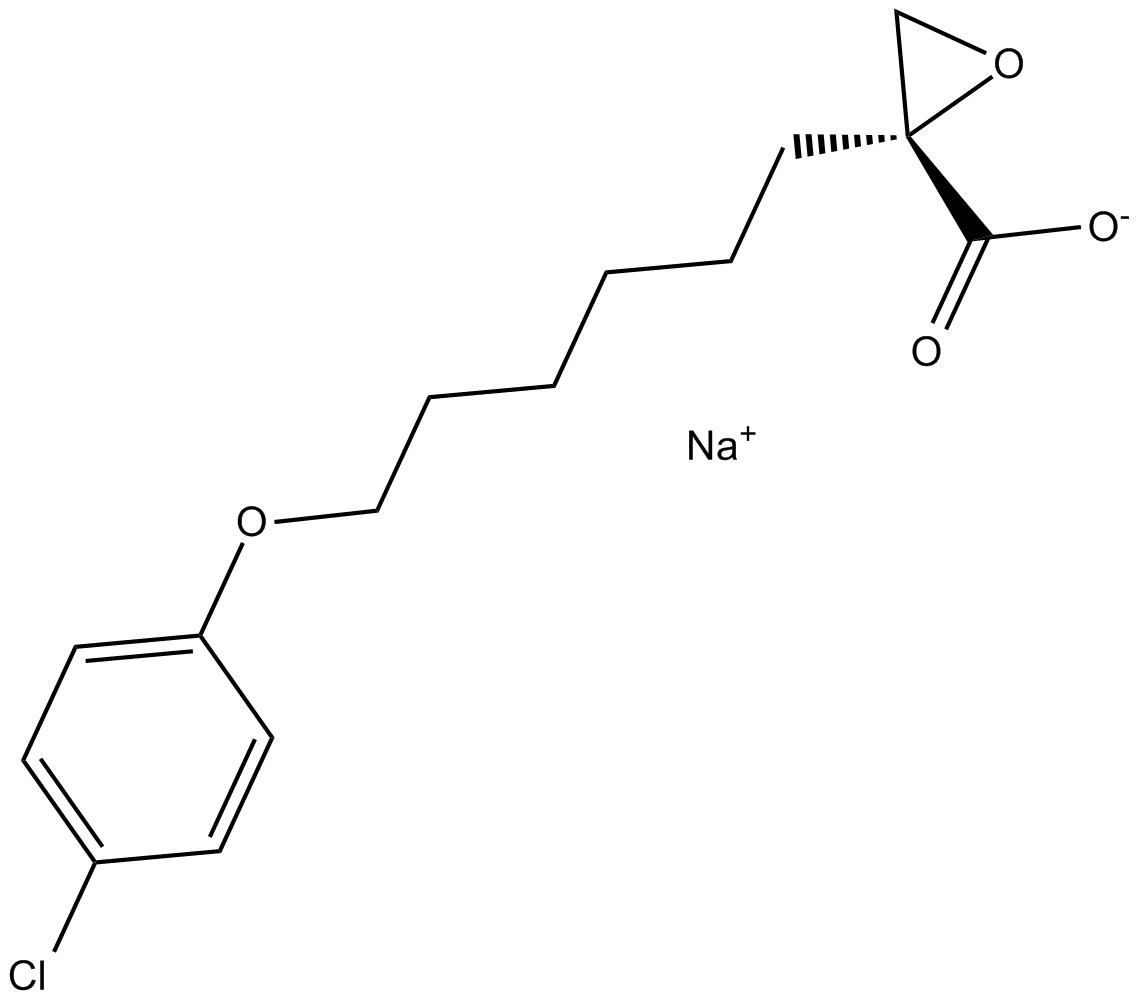
-
GC34096
(R)-(-)-Gossypol acetic acid (AT-101 (acetic acid))
(R) - (-) - Gossypol acetic acid (AT-101 (acetic acid)) (AT-101 (acetic acid)) هو أيزومر رافع لمنتج طبيعي Gossypol. تم تصميم AT-101 على الارتباط ببروتينات Bcl-2 و Mcl-1 و Bcl-xL مع Kis لـ 260± ؛ 30 نانومتر ، 170± ؛ 10 نانومتر ، و 480± ؛ 40 نانومتر ، على التوالي.
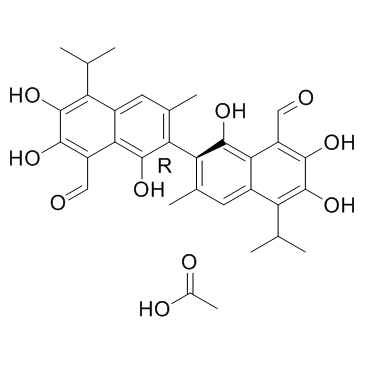
-
GC65610
(R)-5-Hydroxy-1,7-diphenyl-3-heptanone
(R) -5-Hydroxy-1،7-diphenyl-3-heptanone هو diarylheptanoid يمكن العثور عليه في Alpinia officinarum

-
GC41716
(R)-CR8
(R) -CR8 (CR8) ، نظير من الجيل الثاني لـ Roscovitine ، هو مثبط قوي لـ CDK1 / 2/5/7/9.

-
GC39281
(R)-CR8 trihydrochloride
CR8, (R)-Isomer trihydrochloride
(R) -CR8 (CR8) ثلاثي هيدروكلوريد ، نظير من الجيل الثاني من Roscovitine ، هو مثبط قوي لـ CDK1 / 2/5/7/9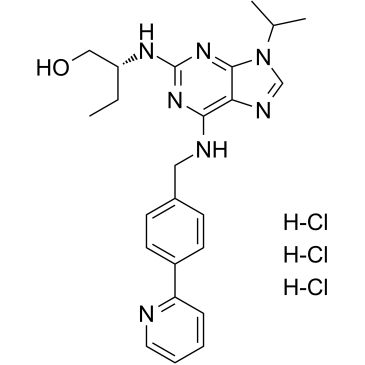
-
GC41719
(R)-nitro-Blebbistatin
R(-)7Desmethyl8nitro Blebbistatin
(R)-nitro-Blebbistatin is a more stable form of (+)-blebbistatin, which is the inactive form of (-)-blebbistatin.
-
GC60407
(R)-Verapamil D7 hydrochloride
(R)-(+)-Verapamil D7 hydrochloride
(R) -Verapamil D7 هيدروكلوريد ((R) - (+) - فيراباميل D7 هيدروكلوريد) هو ديوتيريوم المسمى (R) -Verapamil hydrochloride(R) -Verapamil hydrochloride ((R) - (+) - Verapamil hydrochloride) هو مثبط P-Glycoprotein(R) -Verapamil hydrochloride يمنع نقل MRP1 بوساطة ، مما يؤدي إلى التحسس الكيميائي لخلايا MRP1 المفرطة في التعبير للأدوية المضادة للسرطان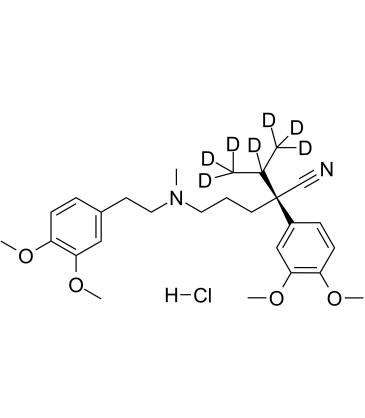
-
GC60408
(R)-Verapamil hydrochloride
(R) -Verapamil hydrochloride ((R) - (+) - Verapamil hydrochloride) هو مثبط P-Glycoprotein(R) -Verapamil hydrochloride يمنع نقل MRP1 بوساطة ، مما يؤدي إلى التحسس الكيميائي لخلايا MRP1 المفرطة في التعبير للأدوية المضادة للسرطان
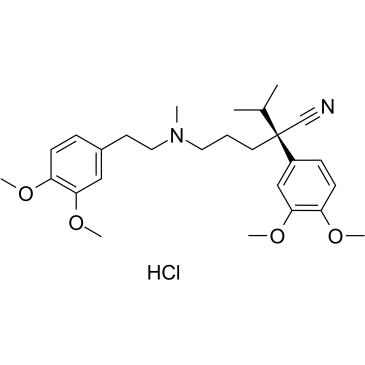
-
GC19541
(rac)-Antineoplaston A10
(rac) - أنتينوبلاستون A10 هو زملائه من Antineoplaston A10Antineoplaston A10 هو أحد مثبطات Ras المحتملة لعلاج الورم الدبقي والورم الليمفاوي وورم الخلايا النجمية وسرطان الثدي

-
GC69795
(Rac)-BIO8898
(Rac)-BIO8898 هو مثبط تفاعل التحفيز المتبادل بين CD40-CD154. يمنع (Rac)-BIO8898 ارتباط CD154 بـ CD40-Ig ، و IC50 هو 25 μM.
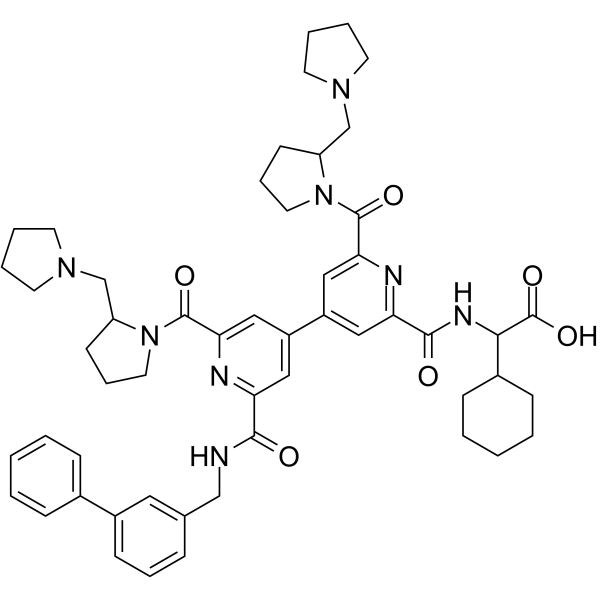
-
GC62528
(Rac)-Hesperetin
(راك) -Hesperetin هو زميل سباق Hesperetin
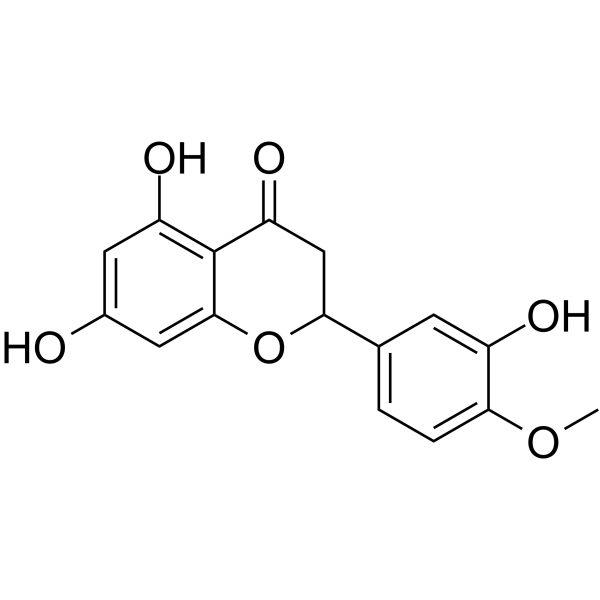
-
GC61750
(Rac)-Indoximod
(Rac) -Indoximod (1-Methyl-DL-tryptophan) هو مثبط إندوليمين 2،3-ديوكسيجيناز (IDO)
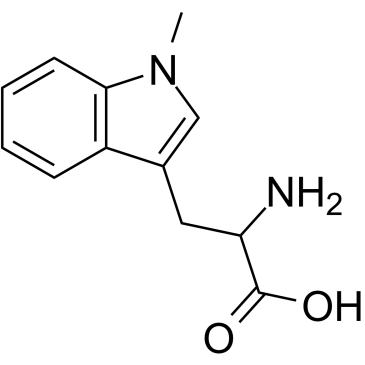
-
GC10098
(S)-10-Hydroxycamptothecin
ChEMBL 273862, NSC 107124
(S) -10-Hydroxycamptothecin (10-HCPT ؛ 10-Hydroxycamptothecin) هو مثبط DNA topoisomerase I المعزول من النبات الصيني Camptotheca accuminata(S) -10-Hydroxycamptothecin يُظهر تأثيرًا ملحوظًا يحفز موت الخلايا المبرمج(S) -10-Hydroxycamptothecin لديه القدرة على الإصابة بالورم الكبدي وسرطان المعدة وسرطان القولون وعلاج اللوكيميا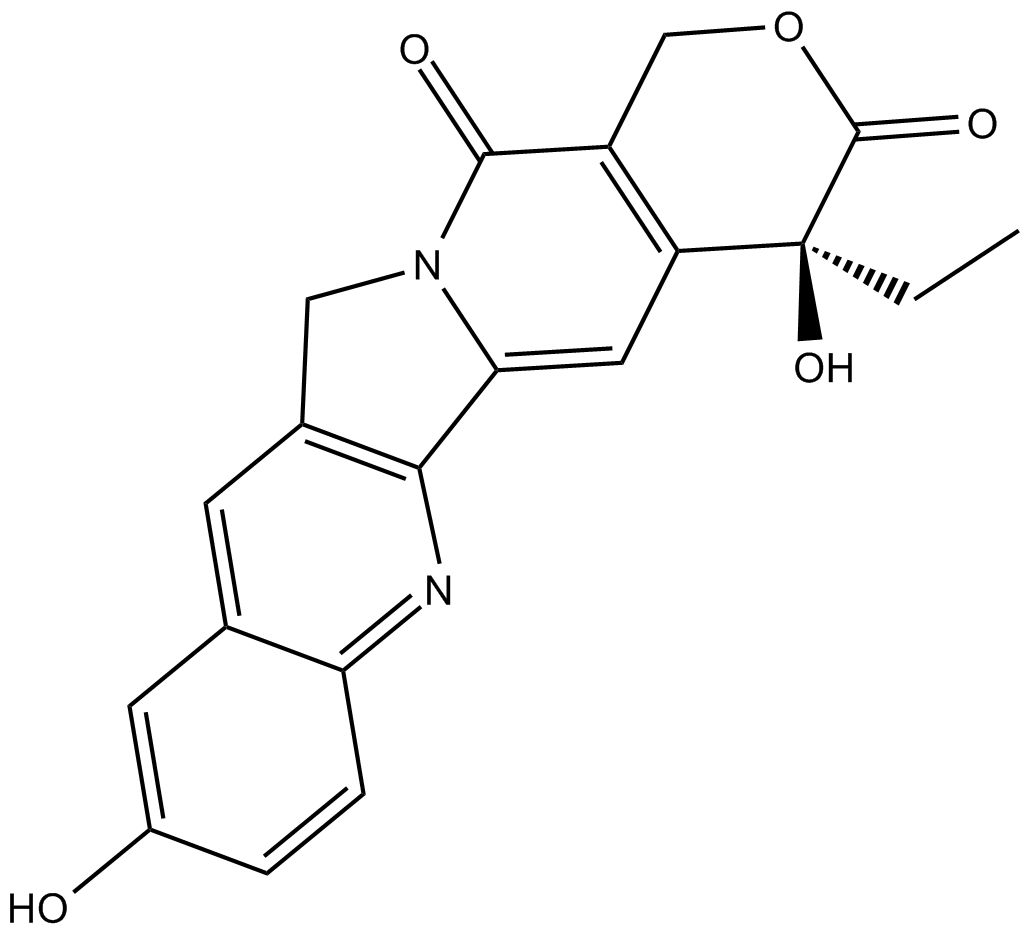
-
GC41557
(S)-3'-amino Blebbistatin
(-)-3'-amino Blebbistatin, m-amino Blebbistatin, meta-amino Blebbistatin
(S)-3'-amino Blebbistatin is a more stable and less phototoxic form of (-)-blebbistatin, which is a selective cell-permeable inhibitor of non-muscle myosin II ATPases.
-
GC41484
(S)-3'-hydroxy Blebbistatin
(-)-3'-hydroxy Blebbistatin, meta-hydroxy-Blebbistatin, m-hydroxy-Blebbistatin
(S)-3'-hydroxy Blebbistatin is a more stable and less phototoxic form of (-)-blebbistatin, which is a selective cell-permeable inhibitor of non-muscle myosin II ATPases.
-
GC52192
(S)-4'-nitro-Blebbistatin
(-)-4'-nitro-Blebbistatin, p-nitro-Blebbistatin, para-nitro-Blebbistatin
(S) -4' ؛ -nitro-Blebbistatin هو مثبط Myosin II غير سام للخلايا ، ومستقر للضوء ، وفلوريسنت محدد ، وقد استخدم في دراسة الدور المحدد للميوسين II في الدراسات الفسيولوجية والتطورية والبيولوجية الخلوية.
-
GC35001
(S)-Gossypol acetic acid
(S)-(+)-Gossypol acetic acid
(S) - Gossypol هو أيزومر لمنتج طبيعي Gossypol. (S) - يرتبط Gossypol بأخدود ربط BH3 لبروتينات Bcl-xL و Bcl-2 ذات التقارب العالي.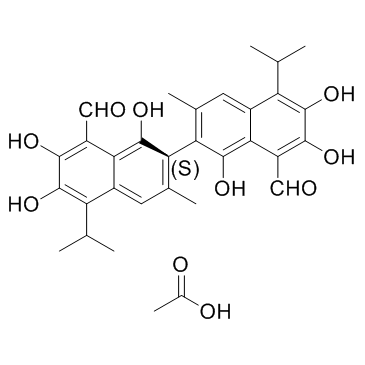
-
GC41739
(S)-nitro-Blebbistatin
S(-)7Desmethyl8nitro Blebbistatin
(S)-nitro-Blebbistatin is a more stable form of (-)-blebbistatin, which is a selective cell-permeable inhibitor of non-muscle myosin II ATPases.
-
GC60425
(S)-Verapamil D7 hydrochloride
(S)-(-)-Verapamil D7 hydrochloride
(S) - فيراباميل D7 هيدروكلوريد ((S) - (-) - فيراباميل D7 هيدروكلوريد) هو ديوتيريوم المسمى (S) - فيراباميل هيدروكلوريد(S) -Verapamil hydrochloride (S (-) - Verapamil hydrochloride) يثبط leukotriene C4 (LTC4) ونقل الكالسين بواسطة MRP1(S) - هيدروكلوريد فيراباميل يؤدي إلى موت الخلايا السرطانية التي يحتمل أن تكون مقاومة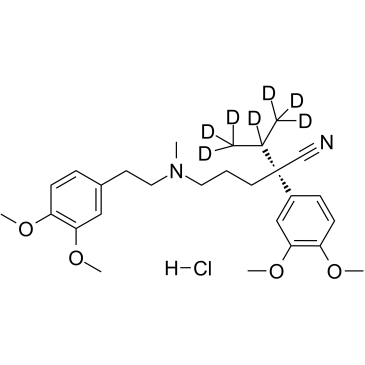
-
GC60008
(S)-Verapamil hydrochloride
(S) -Verapamil hydrochloride (S (-) - Verapamil hydrochloride) يثبط leukotriene C4 (LTC4) ونقل الكالسين بواسطة MRP1(S) - هيدروكلوريد فيراباميل يؤدي إلى موت الخلايا السرطانية التي يحتمل أن تكون مقاومة
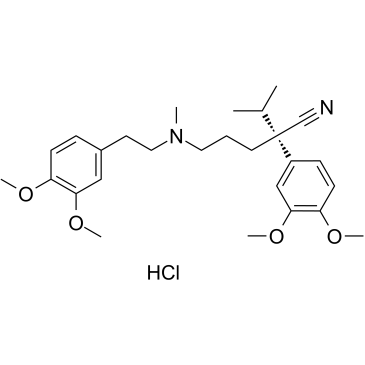
-
GC18787
(±)-Dunnione
NSC 95403
(±)-Dunnione is a naturally occurring naphthoquinone with diverse biological activities.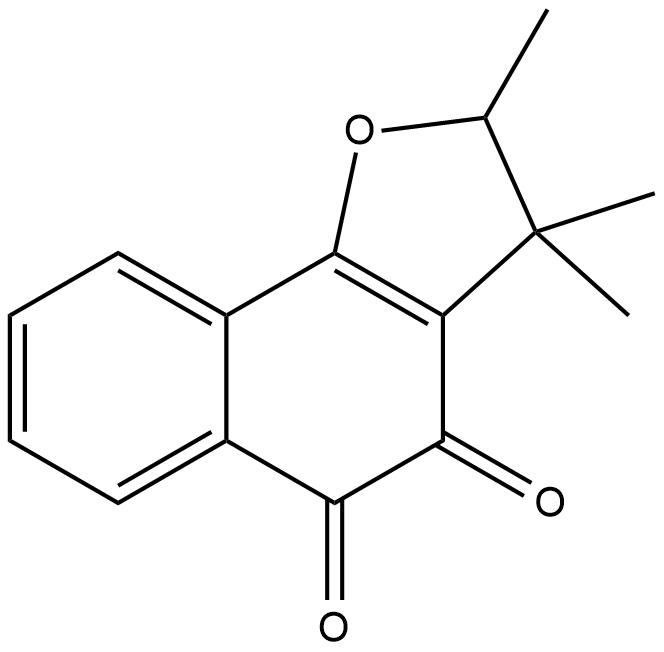
-
GC11965
(±)-Huperzine A
Hup A, (-)-Selagine
A neuroprotective AChE inhibitor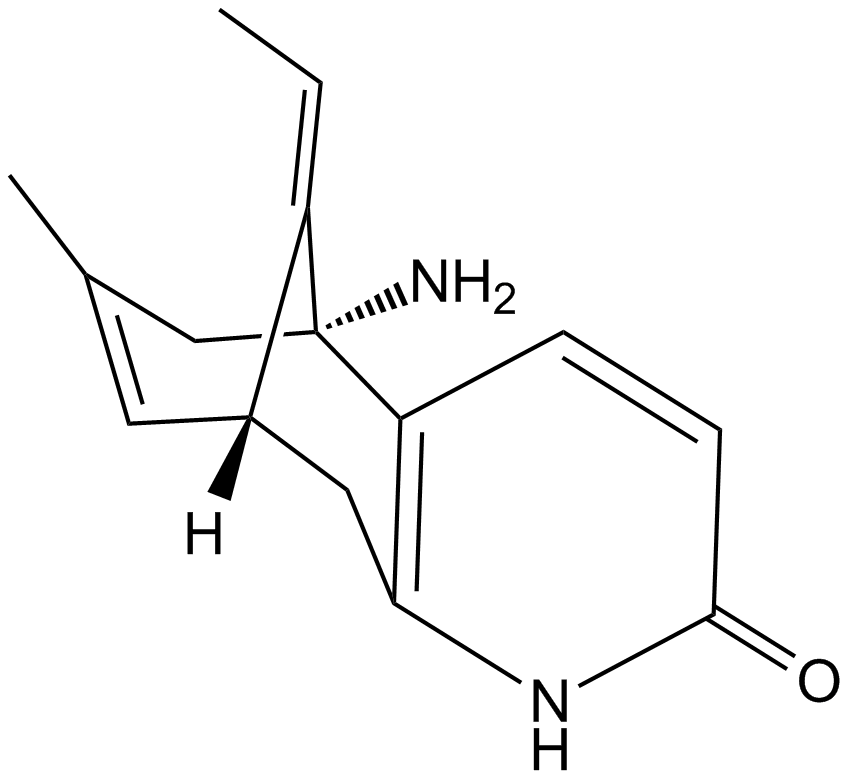
-
GC16375
(±)-Jasmonic Acid methyl ester
(±)-Methyl Jasmonate
(± ؛) - حمض جاسمونيك ميثيل استر هو مستقلب داخلي.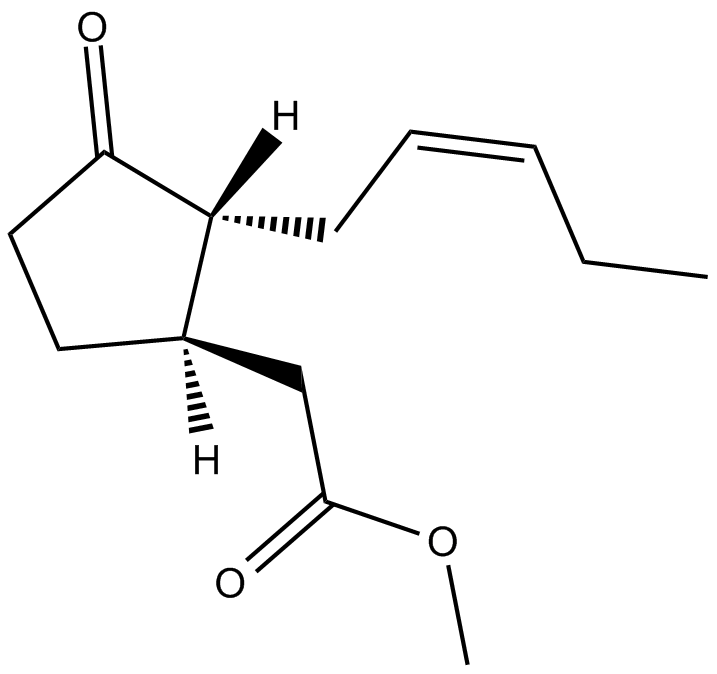
-
GC14154
(±)-Nutlin-3
Nutlin 3b
MDM2 antagonist, potent and selective
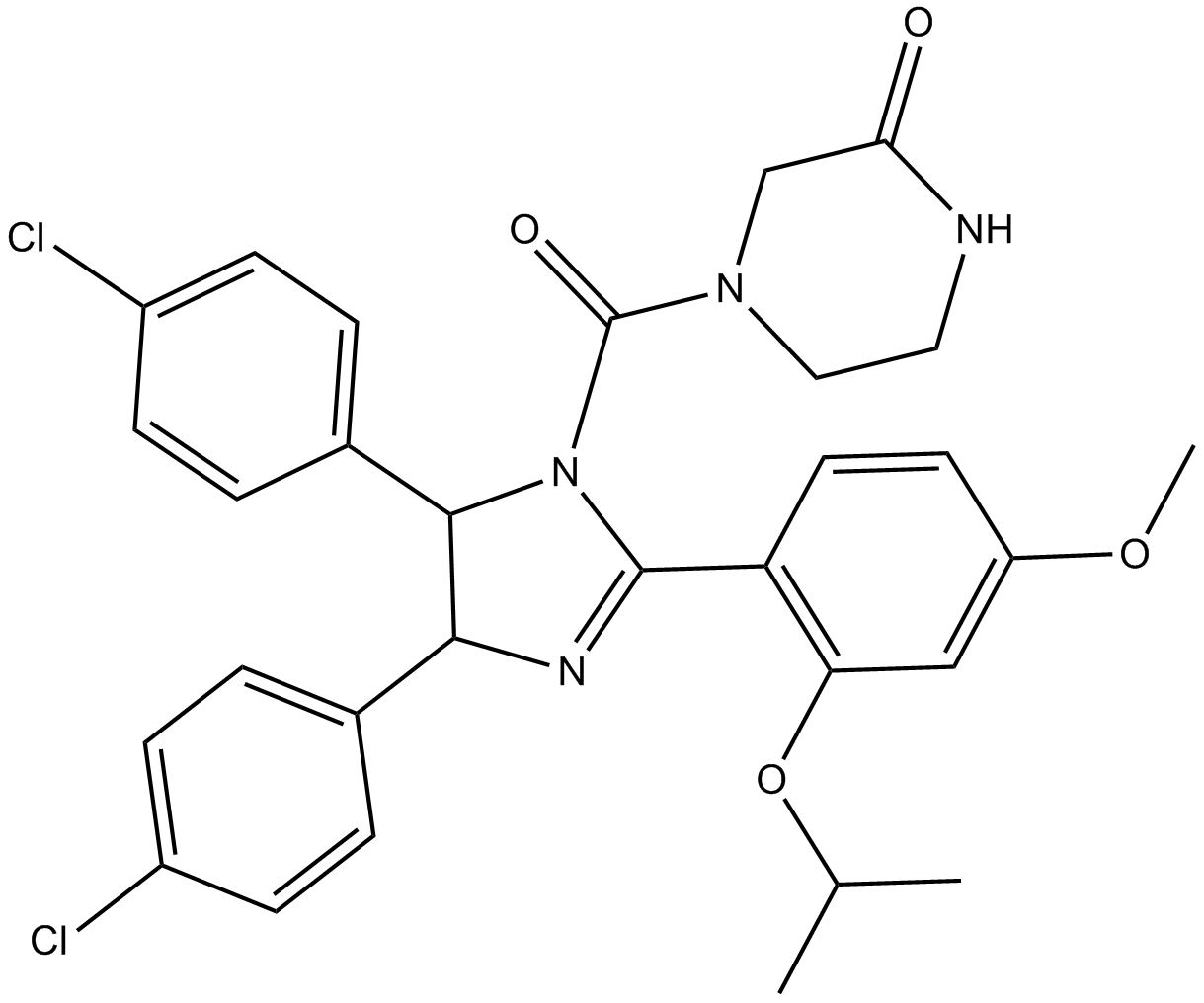
-
GC46379
1,2-Dioleoyl-sn-glycero-3-PS (sodium salt)
1,2-DOPS, 18:1/18:1-PS; PS(18:1/18:1), 1,2-Dioctadecenoyl-sn-glycero-3-Phosphoserine, 1,2-Dioctadecenoyl-sn-glycero-3-Phosphatidylserine
1،2-Dioleoyl-sn-glycero-3-PS (ملح الصوديوم) هو بديل لـ Phosphoserine / phosphatidylserine.
-
GC19528
1,4-Benzoquinone
p-Benzoquinone, NSC 36324, p-Quinone
A toxic metabolite of benzene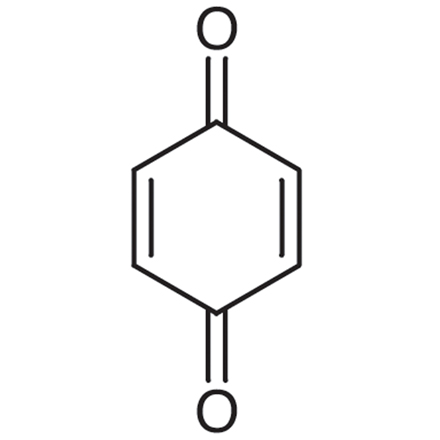
-
GC42018
1-O-Octadecyl-2-O-methyl-sn-glycerol
2Methyl1octadecylsnglycerol, PIA 7
1-O-Octadecyl-2-O-methyl-sn-glycerol is a metabolite of a phosphotidylinositol ether lipid analog (PIA).
-
GC41865
10'-Desmethoxystreptonigrin
10'-Desmethoxystreptonigrin is an antibiotic originally isolated from Streptomyces and a derivative of the antibiotic streptonigrin.

-
GC49736
10-acetyl Docetaxel
PNU 101383, 10-acetyl Taxotere
10-أسيتيل دوسيتاكسيل (10-أسيتيل دوسيتاكسيل) هو نظير لدوسيتاكسيل ، مع نشاط مضاد للسرطان. Docetaxel هو مثبط لتفكيك الأنابيب الدقيقة ، مع نشاط مضاد.
-
GC64726
10-Formyl-5,8-dideazafolic acid
حمض 10-Formyl-5،8-dideazafolic هو مثبط ثيميديلت سينثيز

-
GC49872
10-Formyltetrahydrofolate (sodium salt) (technical grade)
10-CHO-FH4, 10-CHO-THF, N10-Formyltetrahydrofolate, 10-formyl H4PteGlu, 10-fTHF
10-Formyltetrahydrofolate (ملح الصوديوم) (الدرجة التقنية) هو شكل من أشكال حمض تتراهيدروفوليك الذي يعمل كمانح لمجموعات الفورميل في عملية الابتنائية.
-
GC70375
12-HETE-d8
12-HETE-d8 is the deuterium labeled 12-HETE.

-
GC35057
14-Deoxyandrographolide
14-DAG
14-ديوكسي أندروغرافوليد هو ديتيربين اللابدين مع نشاط حجب قناة الكالسيوم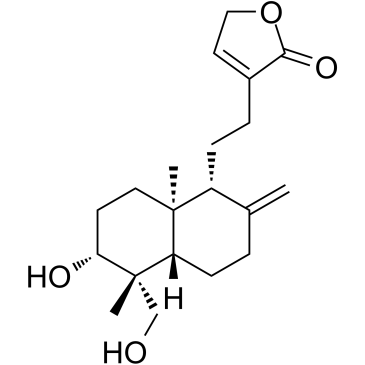
-
GC11988
15-acetoxy Scirpenol
4-Deacetylanguidin,NSC 267030
15-acetoxyscirpenol ، أحد السموم الفطرية المكونة من acetoxyscirpenol (ASMs) ، يحفز بقوة موت الخلايا المبرمج ويمنع نمو خلايا Jurkat T بطريقة تعتمد على الجرعة عن طريق تنشيط الكاسبيسات الأخرى المستقلة عن caspase-3.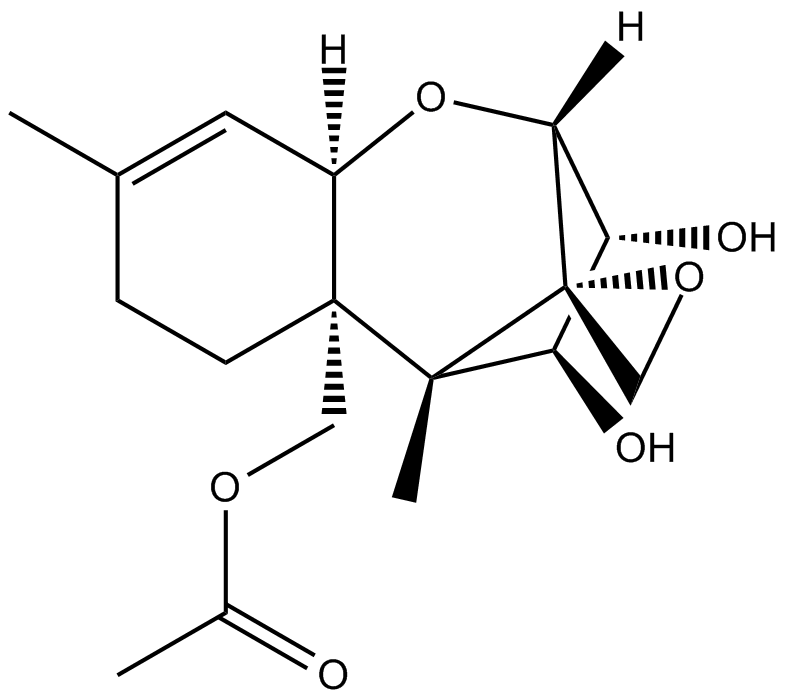
-
GC41938
15-Lipoxygenase Inhibitor 1
15LO Inhibitor 1
مثبط 15-Lipoxygenase 1 هو مثبط انتقائي لـ 15-lipoxygenase ، مع IC50 18 μ ؛ M. مثبط 15-Lipoxygenase 1 يحتوي على IC50s من 19.5 μ ؛ M و 19.1 μ ؛ M لفول الصويا 15-lipoxygenase (SLO) والإنسان 15-lipoxygenase-1 (15-LOX-1) ، على التوالي. مثبط 15-ليبوكسيجيناز 1 لديه القدرة على البحث عن سرطان البروستاتا.
-
GC46451
16F16
A PDI inhibitor

-
GC11720
17-AAG (KOS953)
BMS 722782, CP 127374, KOS 953, NSC 330507, Tanespimycin
17-AAG(Geldanamycin), a natural benzoquinone ansamycin antibiotic, is the first established inhibitor of Hsp90.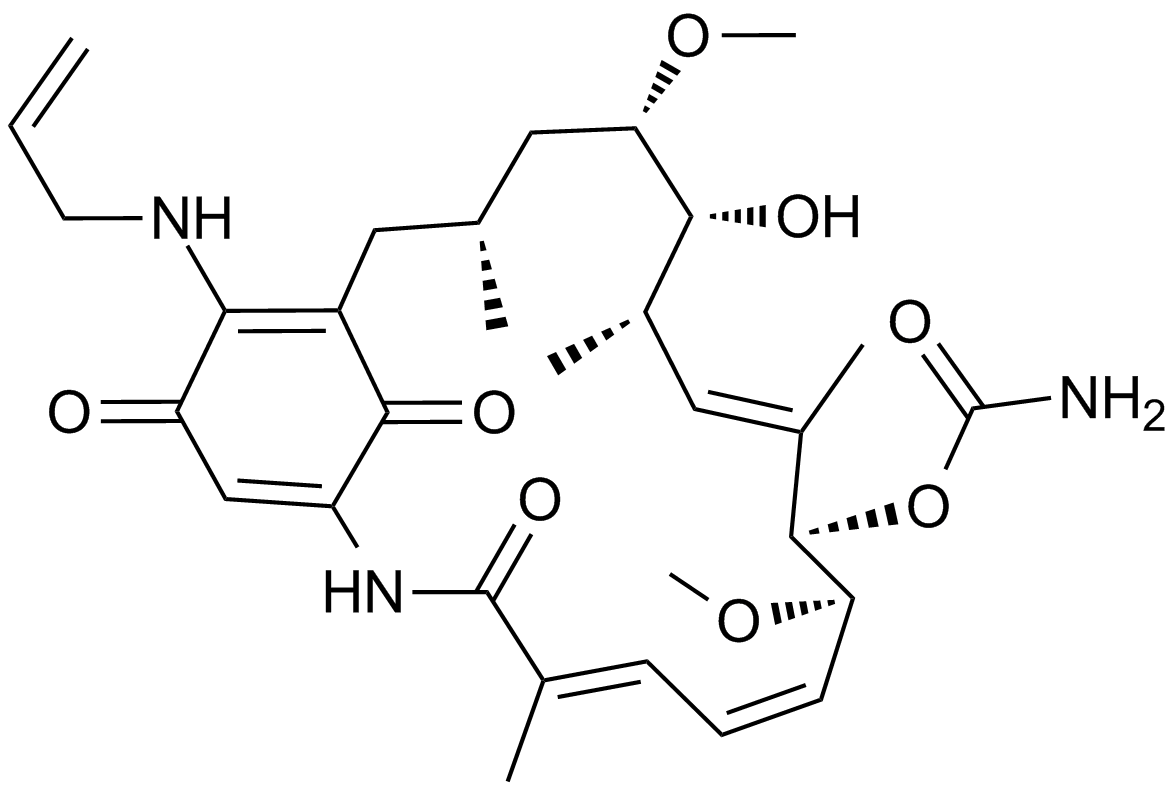
-
GC13044
17-DMAG (Alvespimycin) HCl
17-DMAG (Alvespimycin) HCl (17-DMAG هيدروكلوريد ؛ KOS-1022 ؛ BMS 826476) هو مثبط قوي لـ Hsp90 ، مرتبط بـ Hsp90 مع EC50 من 62± ؛ 29 نانومتر.

-
GC41983
19,20-Epoxycytochalasin D
19،20-Epoxycytochalasin D ، خلوي ، هو مستقلب فطري من Nemania sp

-
GC48423
19-O-Acetylchaetoglobosin A
Chaetoglobosin A Acetate
19-O-Acetylchaetoglobosin A ، قلويد خلوي ، هو مستقلب فطري معزول في الأصل من C. globosum الذي له أنشطة مثبطة لبلمرة الأكتين وأنشطة سامة للخلايا19-O-Acetylchaetoglobosin A سام للخلايا لخلايا سرطان عنق الرحم هيلا
-
GC39296
1G244
1G244 هو مثبط قوي DPP8 / 9 مع IC50s من 12 نانومتر و 84 نانومتر ، على التوالي1G244 لا يمنع DPPIV و DPPIIيستحث 1G244 موت الخلايا المبرمج في خلايا المايلوما المتعددة وله تأثيرات مضادة للورم النخاعي
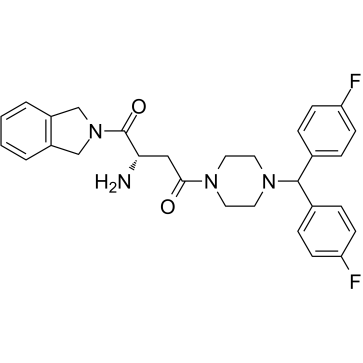
-
GC46508
2',2'-Difluoro-2'-deoxyuridine
dFdU
An active metabolite of gemcitabine
-
GC41612
2'-O-Methylguanosine
2'-O-Methylguanosine هو نيوكليوسيد معدل يتم إنتاجه في tRNAs عن طريق عمل tRNA guanosine-2'-O-methyltransferase

-
GC12258
2,3-DCPE hydrochloride
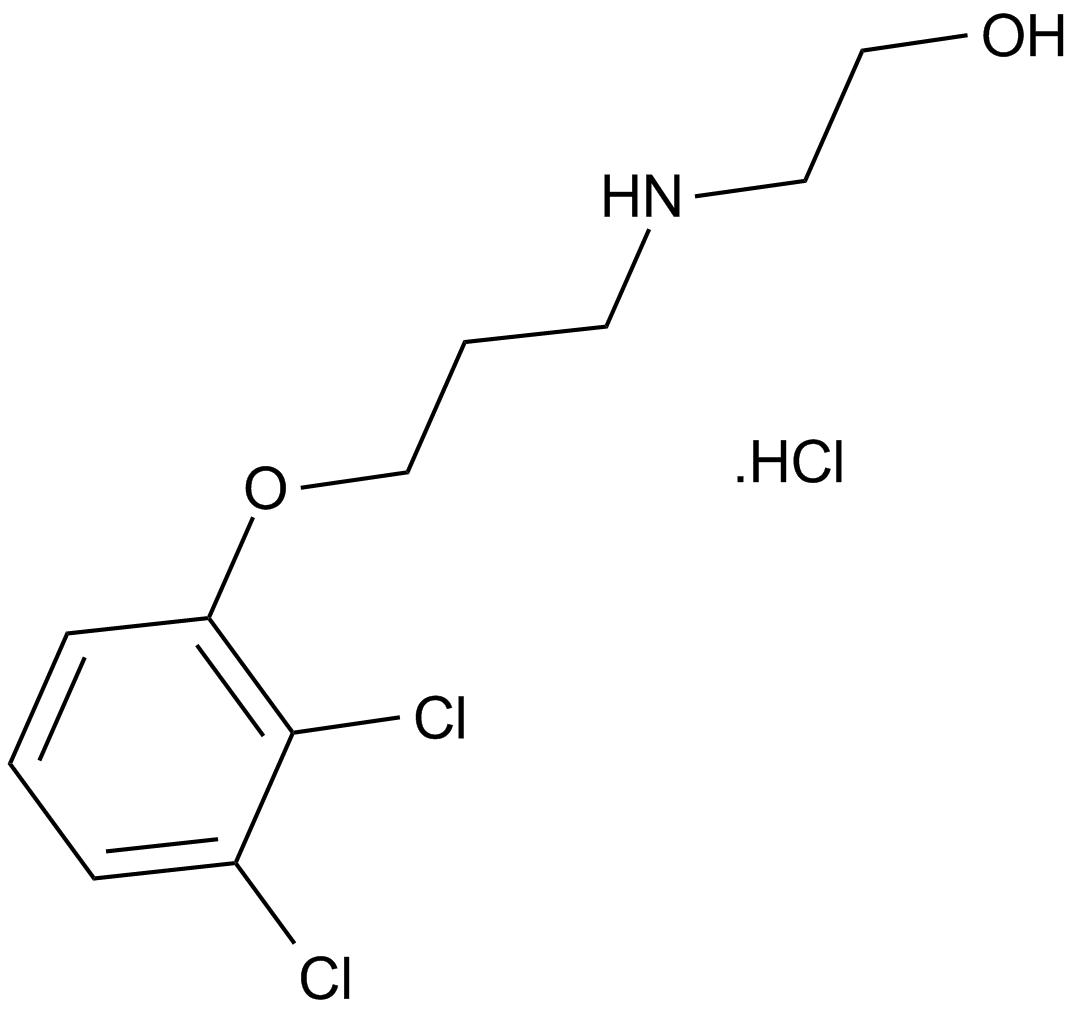
-
GC40947
2,3-Dimethoxy-5-methyl-p-benzoquinone
Coenzyme Q0, CoQ0
2،3-Dimethoxy-5-methyl-p-benzoquinone (CoQ0) هو مركب يوبيكوينون فعال عن طريق الفم يمكن اشتقاقه من Antrodia cinnamomea.
-
GC68452
2,4,6-Triiodophenol

-
GC46057
2,5-Dihydroxycinnamic Acid phenethyl ester
An inhibitor of 5-LO

-
GC45324
2,5-dimethyl Celecoxib
DMC

-
GN10065
2-Atractylenolide
2-Atractylenolide
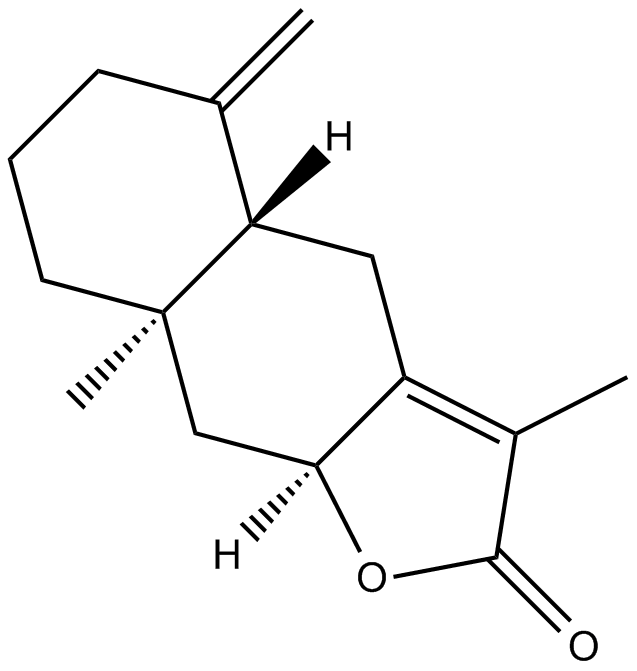
-
GC40675
2-deoxy-Artemisinin
2-deoxy-Artemisinin is an inactive metabolite of the antimalarial agent artemisinin.

-
GC17430
2-Deoxy-D-glucose
2-DG
2-ديوكسي دي جلوكوز (2DG)، هو مشتق الجلوكوز و يعمل كمثبط تنافسي لعملية التحليل الغلايكولية.
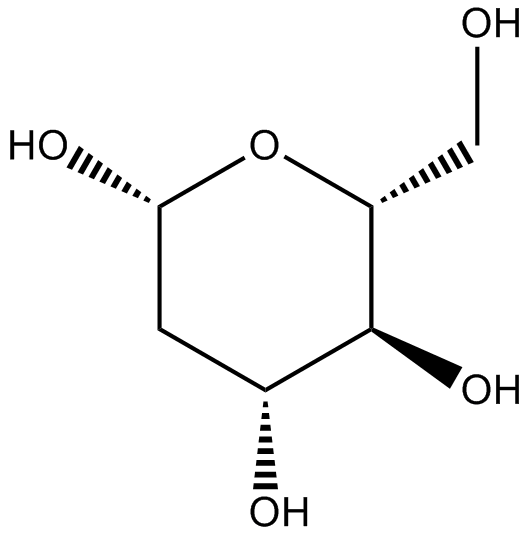
-
GC49223
2-deoxy-D-Glucose-13C6
2-DG-13C6
An internal standard for the quantification of 2-deoxy-D-glucose
-
GC46545
2-Fluoroadenine
F-Ade, NSC 27364
2-الفلوروادينين عبارة عن قواعد بيورين سامة2-فلوروادينين له سمية في الخلايا السرطانية غير المتكاثرة والمتكاثرة2-فلوروادينين يمكن استخدامه للبحث عن السرطان
-
GC12545
2-HBA
Bis(2-hydroxybenzylidene)acetone
2-HBA هو محفز قوي لـ NAD (P) H: مستقبل quinone oxidoreductase 1 (NQO1) والذي يمكنه أيضًا تنشيط caspase-3 و caspase-10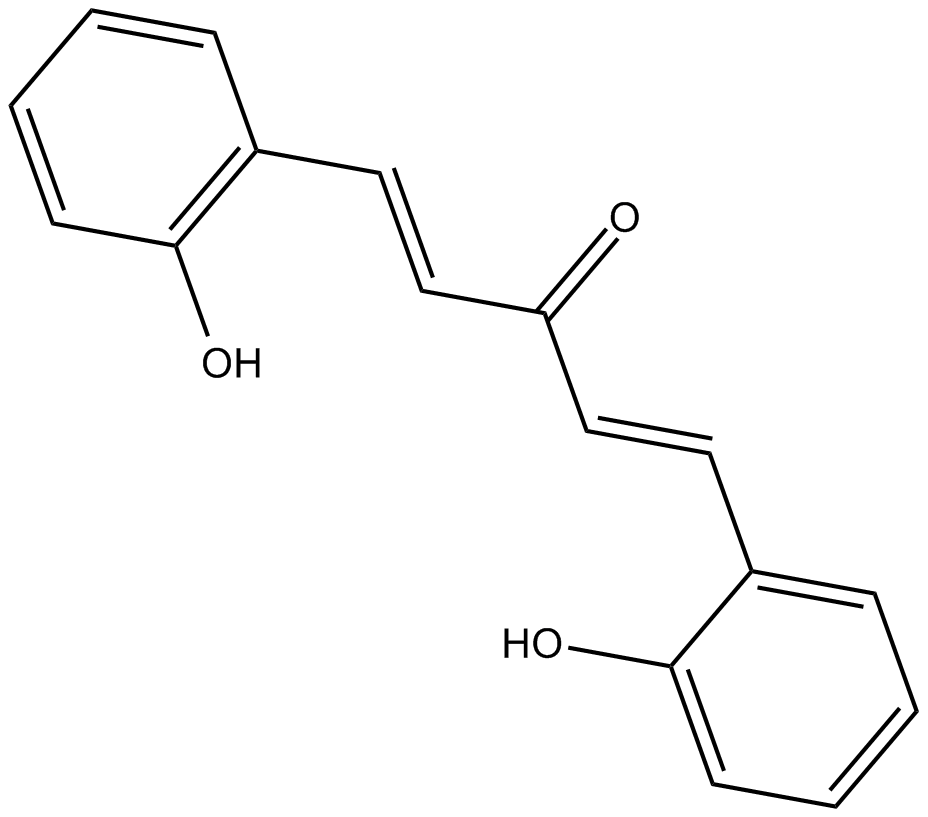
-
GC38318
2-Methoxycinnamaldehyde
2-ميثوكسيسينامالديهيد (o-Methoxycinnamaldehyde) مركب طبيعي من سيناموموم كاسيا ، مع نشاط مضاد للأورام2-Methoxycinnamaldehyde يمنع التكاثر ويحث على موت الخلايا المبرمج عن طريق فقدان إمكانات غشاء الميتوكوندريا (ميكرومتر) ، وتفعيل كل من caspase-3 و caspase-92-Methoxycinnamaldehyde بشكل فعال يثبط عامل النمو المشتق من الصفائح الدموية (PDGF) الناجم عن الهجرة HASMC
